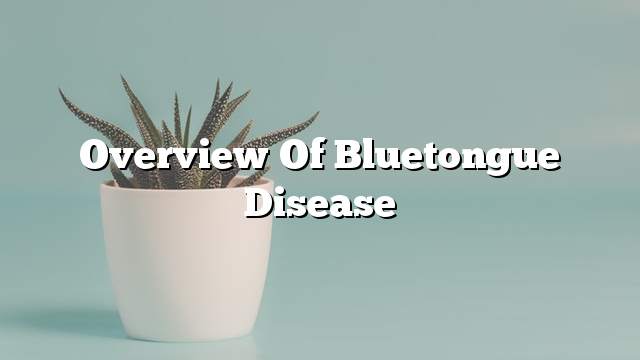Bluetongue disease is a seasonal disease, which is common in the summer. It is a disease that affects sheep, cows, sometimes deer and goats. The disease is transmitted through blood through insects such as mosquitoes.
There is no cure for this disease yet, but the means to fight it are to combat and eliminate the carrier’s vector.
The virus that causes the disease is a viral virus, belonging to the family of viral viruses, a virus is very resistant, remains in the blood is not clotted at 4 degrees Celsius, but can not tolerate the high temperature, and dies at 20 degrees Celsius.
Sheep are the most affected by this disease, compared to other animals, and symptoms appear directly.
As we mentioned, this virus is transmitted only through an intermediary, such as mosquitoes and other insects, not transmitted through food, or direct contact between animals.
This virus has the ability to penetrate the chorionic if there is a pregnancy, and the direct impact on the fetus, causing deformities, and often abortion of pregnancy.
The disease can be identified by observing its symptoms when it affects sheep. Symptoms of this disease include:
- The appearance of blue on the tongue of the animal, which is why the disease is named; because the appearance of blue is considered the main symptom of the disease.
- The height observed in the temperature of the animal, the infected animal rises to a temperature of 42 degrees Celsius.
- The animal becomes idle, apathetic, it is easy to observe the animal; not to eat, and lack of movement.
- Frequent mucous secretions, frequent tears, and saliva out of the mouth of the animal in large quantities, evidence of his injury.
- The occurrence of continuous diarrhea of the animal, which affects the animal and its health.
- The entry of the virus into the placenta – as mentioned earlier – causes deformities, and miscarriages occur.
- The difficulty of walking the animal and also relaxes the symptoms of the disease.
- Swelling of the animal’s head, and pain in the muscles and joints.
After we know the symptoms of this disease, how can we prevent this disease in the absence of treatment for this disease?
One of the methods to be followed in prevention and reduction of the following infection:
- Combating the vector of this disease, because we know that the mosquito is one of the carriers of the disease, it must combat this insect and eliminate it.
- The use of pesticides to eliminate insects, which is the mediator for the transmission of the virus that causes the disease.
- When an infected animal is noticed, it must be immediately disposed of and removed from the rest of the animals.
- With the spread of the disease, some vaccines should be used with healthy non-infected animals to protect them before they are infected.
Blue-leaf disease Farm owners may suffer significant losses because of laws imposed by the Ministry of Health in the case of animals infected with this disease, so should be constant follow-up of animals, especially in the summer.
